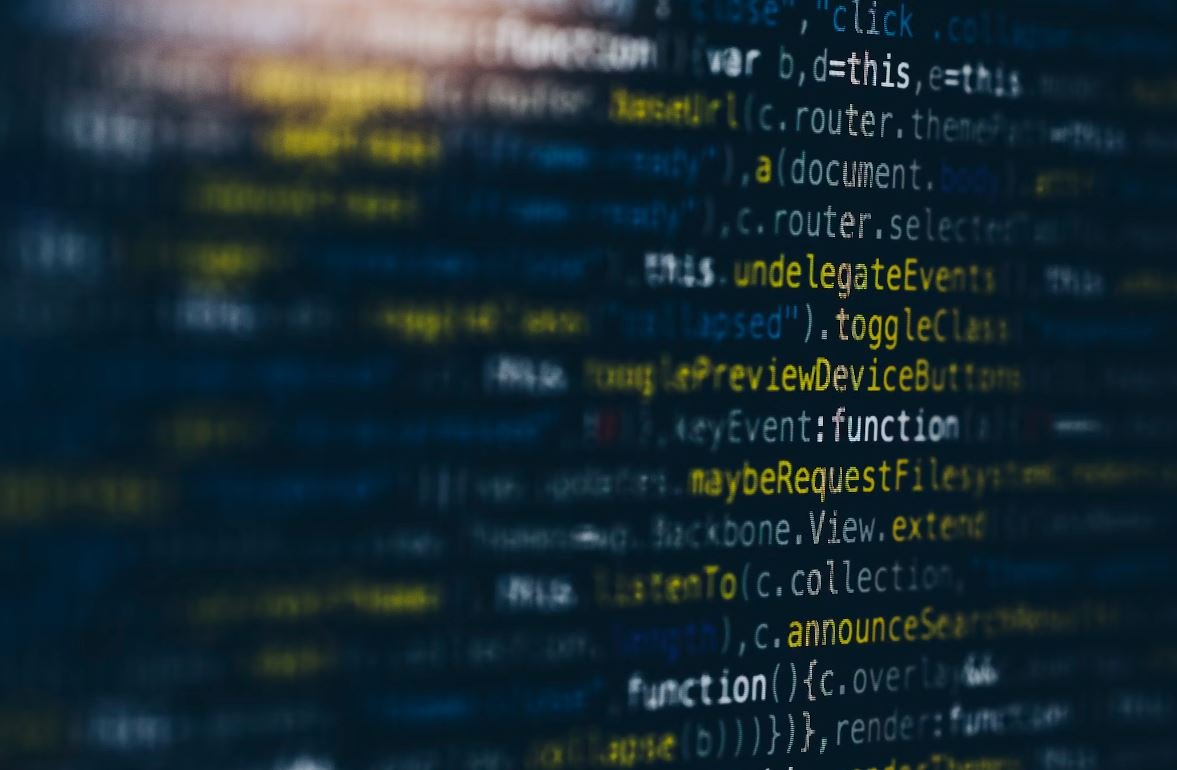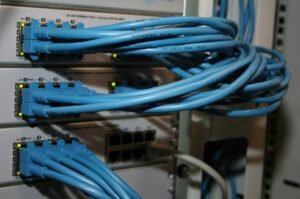AI Is Dangerous
Artificial Intelligence (AI) has revolutionized many industries, enhancing efficiency and providing innovative solutions. However, amidst the excitement and potential benefits, it is vital to acknowledge the dangers associated with AI that demand careful consideration.
Key Takeaways
- AI has the potential to be misused, leading to harmful consequences.
- Concerns about AI ethics and privacy are growing.
- The impact of AI on jobs and the economy is uncertain.
**The evolution of AI brings forth many ethical challenges**. Given the ability of AI systems to learn and make decisions autonomously, there is a risk that AI could be programmed with malicious intent or biased data, resulting in harmful actions. *For example, the deployment of autonomous weapons equipped with AI could lead to disastrous consequences, as machines may lack the moral judgment and discretion possessed by humans*.
In addition to malicious use, **AI raises privacy concerns**. As AI technology advances and becomes more pervasive, the collection and analysis of vast amounts of personal data raise questions about the protection of individual privacy. *Imagine a scenario where AI algorithms analyze personal information on an unprecedented scale, posing a significant threat to personal privacy and potentially enabling surveillance states*.
**The impact of AI on jobs and the economy is uncertain**, creating both opportunities and challenges. While AI can automate repetitive tasks and increase productivity, it also poses a threat to certain job sectors. *For instance, autonomous vehicles and automated factories may lead to significant job loss in the transportation and manufacturing industries*.
AI Dangers in Numbers
| Statistic | Value |
|---|---|
| Number of AI-related privacy incidents reported in 2020 | Over 100 |
| Projected global job displacement due to AI by 2030 | Between 75 million and 375 million jobs |
| AI spending worldwide in 2022 | $79.2 billion |
Furthermore, **AI can perpetuate existing biases and discrimination**. If AI systems are trained on biased data or improper algorithms, they can reinforce existing prejudices and amplify social inequalities. *This has been evident in cases where facial recognition technology has shown higher error rates for people with darker skin tones, exacerbating racial bias.*
The Ethical Responsibility
Given the potential risks associated with AI, it is crucial to address its ethical implications and ensure that the development and deployment of AI systems are guided by robust ethical frameworks. **Transparency, accountability, and explainability** are essential aspects of responsible AI. Developers and organizations must be transparent about how AI systems operate, take responsibility for their actions, and ensure they can be audited or understood by humans.
The risks and dangers associated with AI should not discourage its further development and utilization. Instead, they should serve as a reminder to approach AI with caution and prioritize ethical considerations when designing and implementing these technologies.
The Future of AI
- The development of ethical guidelines and regulations is necessary to mitigate AI risks.
- AI should be used to augment human capabilities rather than replace them.
- Public awareness and education about AI dangers are crucial.
By proactively addressing AI dangers, we can foster an environment where the benefits of AI can be maximized while minimizing the potential harm. As technology continues to advance, it is essential to emphasize responsible AI development, research, and collaboration, ensuring that AI serves humanity’s best interests and contributes to a brighter future.
Data Breaches and AI Accountability
| Year | Number of reported data breaches worldwide |
|---|---|
| 2018 | 1,244 |
| 2019 | 1,473 |
| 2020 | 1,001 |
As AI becomes more entwined in our lives, the importance of ensuring accountability for AI systems cannot be overstated. Instances of AI misuse or failures should be addressed promptly and transparently, while the development of AI should be mindful of potential risks, ensuring safety and security.
Conclusion
AI presents immense possibilities, but it also poses significant dangers. It is crucial to recognize these risks and address them through responsible AI development, ethics, regulation, and public awareness. By doing so, we can harness the power of AI while safeguarding society from potential harm.

Common Misconceptions
1. AI will lead to human extinction
One common misconception people have about AI is that it will ultimately lead to the extinction of the human race. While AI has the potential to impact various aspects of our lives, this doomsday scenario is highly unlikely. Instead, AI technologies have the potential to greatly enhance many industries and improve efficiency and productivity.
- AI can help humans perform tasks more effectively and efficiently.
- AI can bring new possibilities for solving complex problems.
- AI can be controlled and regulated by humans to ensure its safe usage.
2. AI will take away jobs from humans
Another common misconception is that AI will replace humans in the workforce, leading to widespread unemployment. While it is true that AI can automate certain tasks, it is important to note that it can also create new jobs and opportunities. Instead of replacing humans, AI has the potential to augment human capabilities and free us from mundane tasks.
- AI can create new jobs that focus on managing and analyzing AI systems.
- AI can eliminate the need for repetitive and tedious tasks, allowing humans to focus on more creative and complex work.
- AI can enhance productivity and innovation and contribute to economic growth.
3. AI will achieve consciousness and rebel against humans
One of the most far-fetched misconceptions is the idea that AI will achieve consciousness and rebel against its human creators, similar to what we see in science fiction movies. However, achieving true consciousness in AI is still a distant and highly theoretical concept. Present-day AI systems operate solely based on pre-defined algorithms and are incapable of independent thought or self-awareness.
- AI systems lack emotions and the ability to take actions outside their programmed scope.
- AI follows strict rules and instructions provided by human programmers.
- The fear of AI rebellion is rooted in science fiction rather than current technological capabilities.
4. AI is biased and discriminatory
Another misconception is that AI systems are inherently biased and discriminatory. While it is true that AI algorithms can inherit biases present in the data they are trained on, this does not mean that all AI is biased. Biases in AI systems can be mitigated through careful data collection, diverse training data, and ongoing monitoring and evaluation.
- AI algorithms can be developed with fairness and ethical considerations in mind.
- Bias detection and mitigation techniques can be employed to ensure fair and equitable outcomes.
- AI can be a powerful tool for identifying and reducing human biases in decision-making processes.
5. AI is a threat to privacy and security
Lastly, some people believe that AI poses a significant threat to privacy and security. While AI technologies do raise important concerns regarding data privacy, it is the implementation and use of AI, rather than AI itself, that determines the risk to privacy and security. Proper safeguards and regulations can be put in place to ensure the responsible and ethical use of AI.
- AI can enhance privacy by automating data anonymization and encryption techniques.
- AI can bolster security measures through advanced threat detection and prevention mechanisms.
- Governments and organizations can establish clear regulations and guidelines for AI data handling to protect user privacy.

Overview of AI Technology
Before discussing the potential dangers of AI, it’s important to understand the scope and impact of this technology. The following table provides an overview of the various applications and advancements in AI.
| Application | Description | Example |
|---|---|---|
| Speech recognition | Ability of computers to recognize and interpret spoken language | Virtual assistants like Siri and Alexa |
| Computer vision | Enables computers to analyze and understand visual data | Facial recognition technology |
| Natural language processing | Allows machines to understand, interpret, and respond to human language | Automated customer support chatbots |
| Machine learning | Algorithms that enable computers to learn and improve without explicit programming | Recommendation systems like Netflix’s |
| Robotics | Integration of AI into physical devices to interact with and assist humans | Surgical robots in healthcare |
AI in the Workforce
The integration of AI in various industries has both positive and negative implications for the workforce. The following table sheds light on some of the impacts of AI on jobs and employment.
| Impact | Description | Examples |
|---|---|---|
| Automation | Tasks being replaced by AI and resulting in job displacement | Automated assembly lines |
| Augmentation | AI enhancing human capabilities and improving decision-making | AI-assisted medical diagnosis |
| New job creation | Emergence of new roles and industries driven by AI advancements | AI ethics specialists |
| Job transformation | Shift in job requirements and skills due to AI integration | Data analysts adapting to work with AI systems |
| Job support | AI tools aiding workers in their tasks, leading to increased efficiency | AI-powered customer service software |
AI and Data Privacy
The use of AI often raises concerns about data privacy and security. The table below highlights some instances where AI intersects with data privacy.
| Scenario | Description | Impact |
|---|---|---|
| Surveillance systems | AI-powered cameras and facial recognition technologies deployed for monitoring | Privacy infringements and potential misuse of data |
| Data breaches | AI systems vulnerable to hacking or unauthorized access | Exposure of sensitive personal information |
| Algorithmic bias | AI models trained on biased data can perpetuate discrimination | Unequal treatment and violations of privacy |
| Location tracking | AI-enabled logging of user location for personalized services | Concerns regarding tracking and misuse of location data |
| Data anonymization | AI techniques employed to de-identify sensitive data for research purposes | Potential re-identification and compromise of privacy |
Ethical Considerations in AI Development
As AI continues to advance, ethical considerations become crucial in its development and deployment. The table below highlights various ethical aspects of AI.
| Ethical Aspect | Description |
|---|---|
| Fairness | Avoiding biases in AI systems to ensure equality and non-discrimination |
| Transparency | Ensuring AI systems’ decisions are explainable and understandable |
| Accountability | Establishing responsibility for the actions and outcomes of AI systems |
| Privacy | Respecting and safeguarding individuals’ private information |
| Safety | Ensuring AI systems do not pose physical or psychological harm |
Controversial AI Use Cases
While AI has immense potential, certain applications have sparked debates for their potentially negative consequences. The table below presents some controversial uses of AI.
| Use Case | Description |
|---|---|
| Automated warfare | AI-powered military systems making life and death decisions autonomously |
| Sentiment analysis | AI algorithms analyzing emotions to manipulate consumer behavior |
| Deepfakes | AI-generate fake videos or audios used to deceive or defame individuals |
| Predictive policing | AI systems used to forecast crimes, raising concerns of racial profiling |
| Automated hiring | AI algorithms filtering job applications may perpetuate biases |
AI in Healthcare
The healthcare industry has seen significant advancements through the implementation of AI technology. The following table showcases various AI applications in healthcare.
| Application | Description | Example |
|---|---|---|
| Disease diagnosis | AI systems aiding in the identification and diagnosis of illnesses | Early cancer detection using AI algorithms |
| Drug discovery | Using AI to accelerate the process of developing new drugs | AI-generated molecules for treating antibiotic-resistant bacteria |
| Remote patient monitoring | AI-enabled devices monitoring patients’ health remotely | Wearable devices tracking vital signs and transmitting data |
| Surgical assistance | Robotic systems assisting surgeons during complex procedures | Robot-assisted minimally invasive surgeries |
| Genomic analysis | AI techniques analyzing genetic data for personalized medicine | Predicting diseases based on genetic markers |
Realizing the Potential of AI
While acknowledging the potential dangers, it is important to recognize and mitigate the risks associated with AI to maximize its benefits. By embracing responsible development, regulation, and ethics, we can harness the full power of AI while minimizing its negative impacts.
Frequently Asked Questions
Can AI pose a threat to humanity?
Yes, there are concerns that advanced artificial intelligence systems, if not properly controlled, could pose a threat to humanity. These concerns stem from the potential for AI to surpass human intelligence and autonomy, making unpredictable or malicious decisions that could harm humans.
What are the risks associated with AI?
AI risks include the potential for weaponization, manipulation by malicious actors, privacy invasion, job displacement, and unintended consequences arising from complex algorithms. These risks amplify the need for responsible development, regulation, and ongoing research in AI safety.
How can AI be dangerous to society?
AI can be dangerous to society if it is used to manipulate public opinions, automate weapons systems, or exert control over critical infrastructure. Additionally, if AI is deployed without proper ethical guidelines, it can perpetuate bias, discrimination, and inequality.
What is the concern with AI being used in autonomous weapons?
The concern with using AI in autonomous weapons is that decisions to take, or even threaten, human lives would be delegated to machines. This could lead to unintended casualties or the potential for AI systems to fall into the wrong hands, escalating conflicts or engaging in warfare without human oversight.
How can we regulate AI to ensure safety?
Regulating AI for safety involves developing frameworks that address the potential risks, setting ethical guidelines, creating oversight bodies, and ensuring transparency and accountability in the development and deployment of AI systems. This includes collaboration between governments, academic institutions, and industry experts.
What efforts are being made to make AI safer?
Several organizations and researchers are actively working on AI safety. They are developing techniques to align AI goals with human values, designing secure and robust systems, exploring AI explainability to enhance transparency, and promoting interdisciplinary research to mitigate potential risks.
Are there any international initiatives to address AI risks?
Yes, there are international initiatives, such as the World Economic Forum’s Global AI Council and the Partnership on AI, that aim to bring together stakeholders to collaboratively address the challenges and risks associated with AI. These initiatives promote dialogue, research, and policy development on AI ethics and safety.
What is AI alignment and why is it important?
AI alignment refers to the process of designing AI systems in such a way that their goals align with human values and objectives, ensuring they act in a manner that is beneficial and aligned with human intentions. It is crucial to prevent AI from becoming misaligned with human values, as misalignment could lead to undesirable outcomes or potentially dangerous behavior.
What role does explainability play in AI safety?
Explainability in AI refers to the ability of AI systems to explain their decisions and actions in a human-interpretable manner. This is important for AI safety as it enhances transparency, allows humans to understand the reasoning behind AI decisions, helps detect biases or unintended consequences, and facilitates trust and accountability in AI systems.
Is it possible to achieve safe AI without slowing down progress?
Balancing AI safety with progress requires a careful approach. While safety measures and regulations may add some complexity and time to AI development, they are essential to ensure that AI advancements are made responsibly and do not pose undue risks. It is possible to achieve safe AI without compromising progress by fostering collaboration, ethical guidelines, and ongoing research.




